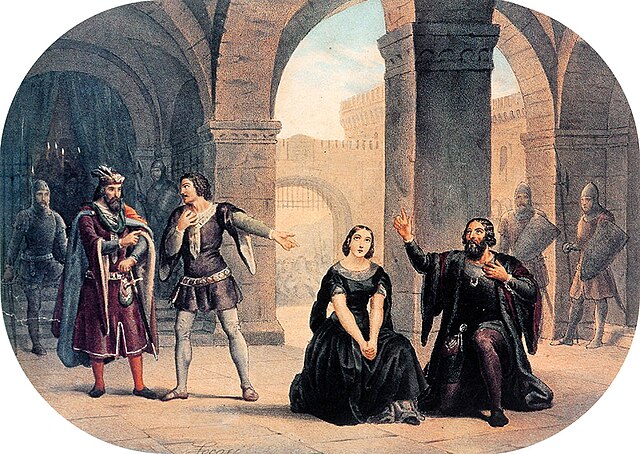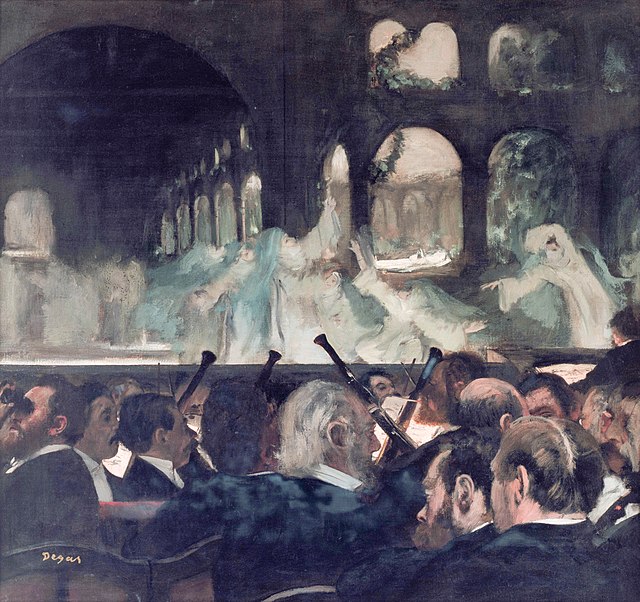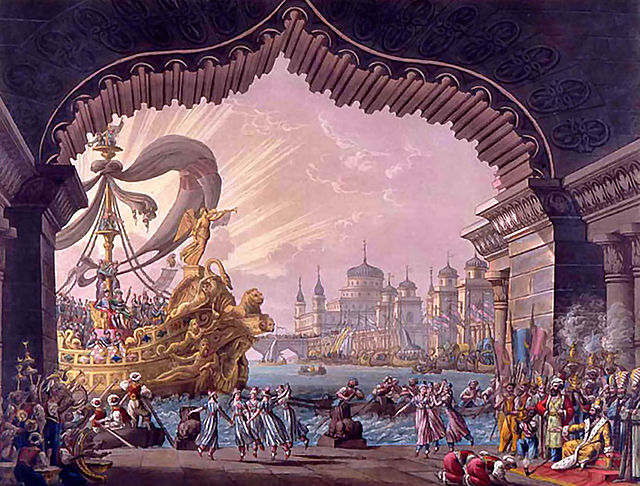Les vêpres siciliennes is a grand opera in five acts by the Italian romantic composer Giuseppe Verdi set to a French libretto by Eugène Scribe and Charles Duveyrier from their work Le duc d'Albe of 1838. Les vêpres followed immediately after Verdi's three great mid-career masterpieces, Rigoletto, Il trovatore and La traviata of 1850 to 1853 and was first performed at the Paris Opéra on 13 June 1855.
Scene from the Italian version of the opera (Lithograph by Roberto Focosi)
Verdi in 1859
Eugène Scribe, librettist of the opera
Les vêpres Siciliennes: cover of the score
Grand opera is a genre of 19th-century opera generally in four or five acts, characterized by large-scale casts and orchestras. The original productions consisted of spectacular design and stage effects with plots normally based on or around dramatic historic events. The term is particularly applied to certain productions of the Paris Opéra from the late 1820s to around 1860; 'grand opéra' has sometimes been used to denote the Paris Opéra itself.
Degas (1871): Ballet of the Nuns from Meyerbeer's Robert le diable (1831); one of the earliest sensations of grand opera
Set design by Francesco Bagnara for act 1 of Il crociato in Egitto by Meyerbeer
Meyerbeer Le Prophète set design for the final conflagration by Philippe Chaperon
Le Cid, Massanet, ballet at Le Cid's camp. Set by Rubé, Chaperon and Jambon.








